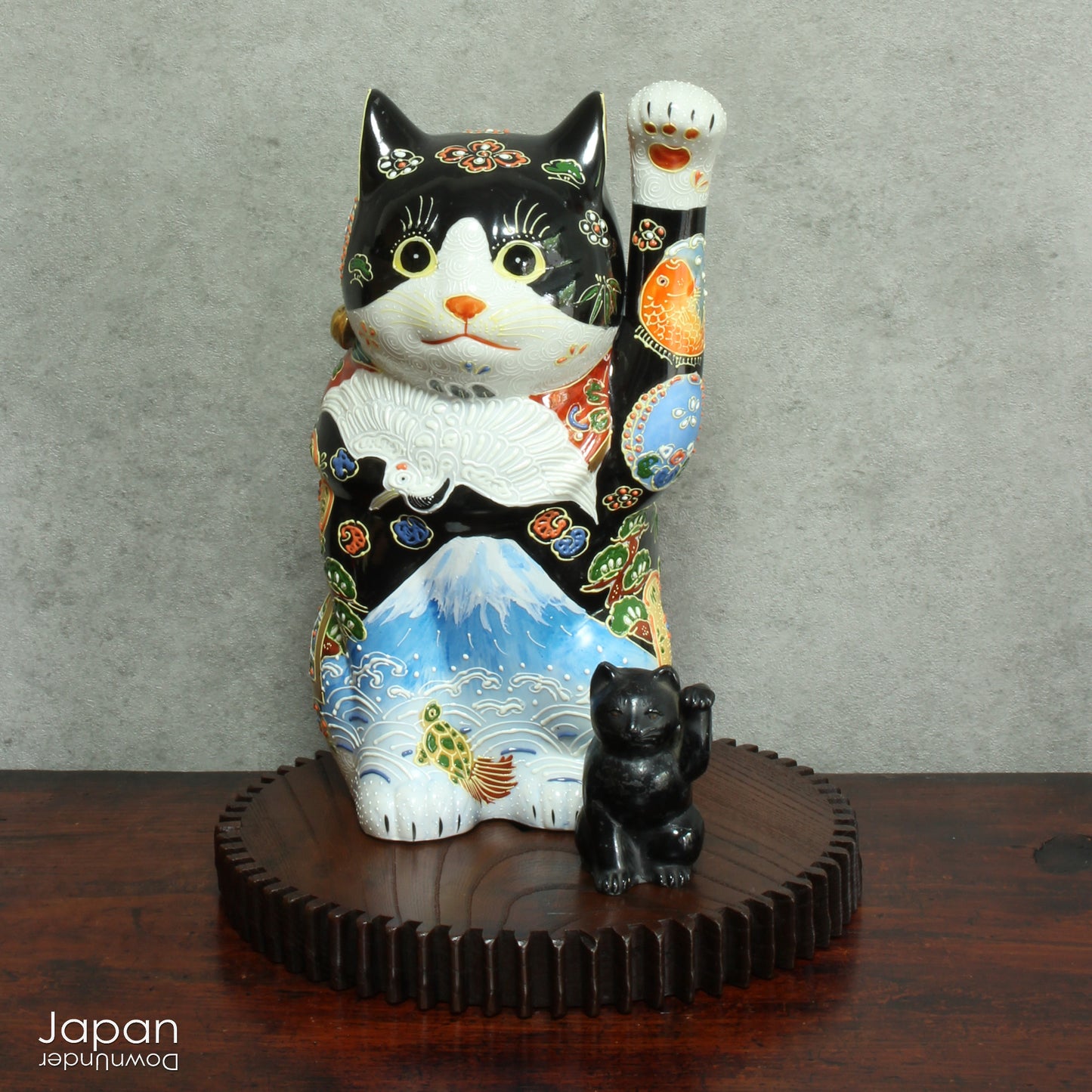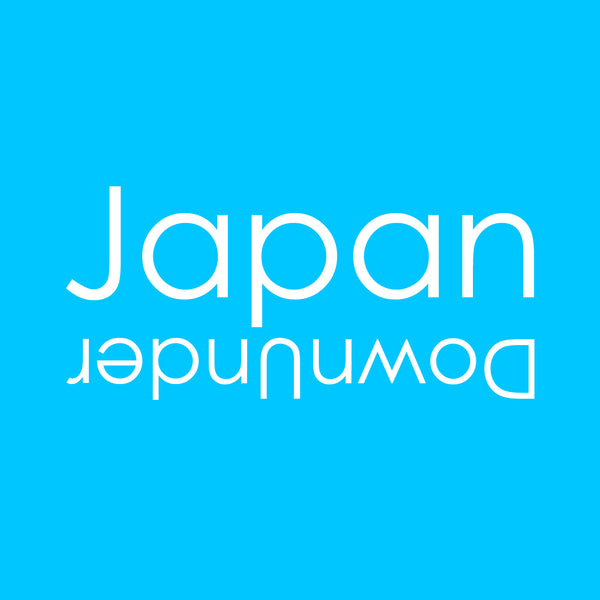JapanDownUnder
japanese kutani lucky cat statue - maneki neko good luck charm
japanese kutani lucky cat statue - maneki neko good luck charm
Couldn't load pickup availability
Love Japanese Style Like We Do
Bring a touch of charm, symbolism, and timeless tradition into your space with this exquisite vintage Japanese lucky cat. More than just decor, this striking maneki neko is believed to invite good fortune, prosperity, and meaningful connections into your life.
Handcrafted in the renowned Kutani style from Ishikawa Prefecture, this large and vividly colored black cat is a true work of art. Every detail is painted with meticulous care by specialized Kutani artisans - masters of a centuries-old craft whose numbers are, sadly, diminishing. The surface is alive with vibrant, auspicious symbols, each rendered with fine brushwork and rich cultural significance.
Crafted in the Mori style, the cat's raised lines and dotted patterns are applied using a delicate tool, not unlike an icing bag with a metal tip. This technique gives the cat a gentle three-dimensional texture, creating soft shadows and an inviting, tactile feel - perfect for those who enjoy rubbing their lucky cat for an extra dose of fortune.
Its wide, alert eyes and upright ears seem to search the distance for incoming luck. With its left paw raised in the traditional gesture, the cat beckons good fortune, new opportunities, loyal customers, and wealth into your world.
Around its neck hangs a beautifully detailed bib and a golden bell. The bib takes the form of a crane - a revered symbol of longevity and happiness - while the bell is believed to ward off evil, protecting your home and bringing peace.
From the base of the cat rises an elegant depiction of Mt. Fuji, painted in soft sky-blue hues and capped with snowy white. Waves dance around its base, while a whimsical minogame turtle glides in the foreground. Together, these symbols speak of resilience, longevity, and serenity. Mt. Fuji itself, a sacred mountain in Shinto belief, resonates with meaning - its name echoing the word buji, suggesting peace and safety.
Waves represent life's ebb and flow, a reminder to remain adaptable and graceful through change. The minogame, a mythical turtle said to live for ten thousand years, carries a flowing train of seaweed from its shell - an emblem of enduring good luck and wisdom.
On the back of the cat, you’ll find the traditional Shochikubai motif - plum, pine, and bamboo - each representing strength, good fortune, and fresh beginnings. Two large folding fans (sensu) unfold across the surface, symbols of expanding prosperity. One fan features the geometric kikkō design, inspired by the turtle shell and representing long life and stability.
Scattered across its body are images of the magical Uchide no Kozuchi, or "treasure mallets," said to grant wishes and release showers of coins when shaken - an irresistible emblem of abundance.
The twin images of the tai fish, a prized red sea bream, add a joyful touch. These auspicious creatures often appear in Japanese celebrations and are seen as harbingers of happiness and success.
Delicate chrysanthemums bloom across the cat’s surface, their many petals symbolizing flourishing relationships and long life. In Japanese culture, chrysanthemums are often associated with nobility and endurance - traits this cat embodies in full.
Stamped with the traditional Kutani seal and signed by the artist on its base, this lucky cat is more than a collectible - it's a celebration of cultural heritage and hope. Ideal for a maneki neko collection or simply as a stunning and meaningful centerpiece, this larger figurine carries an old saying with it: the bigger the cat, the bigger the luck.
- measures around 28 cm (11") tall x 14 cm (5.5") across x 13 cm (5.1") deep.
- weighs 1900 gm.
(listing for Mt Fuji large maneki neko only)
SHIPPING INFORMATION
- please read our shipping notes in shipping policy.
- we use recycle packaging wherever possible and wrap for safety, rather than appearance!
ABOUT OUR VINTAGE, ANTIQUE AND OTHER ITEMS
We list pieces we feel are worthy of display. There may be scratches, dents, fading and signs of wear and tear. We try to explain the condition of each item exactly, but may miss something.
Information regarding the item and it’s age is obtained from dealers and our personal research. We do our best to give you the correct information but please be aware that we cannot guarantee this information.
Please message us prior to purchase with any questions you may have about our products.
SENSU - FOLDING FANS
The fan is a symbol of prosperity. It spreads out when being opened and this is considered to represent the widening of wealth. It is also considered to be similar to the blooming of a flower and represents the blooming of life. The fan starts at a single point from which each wooden slat goes out in different directions. These different directions are believed to resemble the various paths we take in our life after the single point of birth.
Fans also take on many meanings depending on how they are decorated. Usually, fans have an odd number of pictures on them. The odd number is considered to bring good luck.
For birthdays, fans have pictures such as chrysanthemums, cranes, and turtles on them to wish the person a long and lucky life. A fan featuring a pair of birds symbolizes the blossoming of love. Two butterflies on a fan symbolize a happy marriage. Plum blossoms on a fan represent new beginnings, while cherry blossoms represent love of parents, wealth and good luck. Roses on a fan symbolize love while bamboo and pine trees can mean patience. A white horse symbolizes mercy, a lion strength and a carp fish represents luck and a long life.
The color on fans is also significant. Gold fans are considered to attract wealth and prosperity. While white and red fans are believed to bring good luck.
KIKKO
Kikko means tortoiseshell in Japanese. The tortoise signifies good fortune and longevity and is represented by a hexagon shape. This hexagonal shape has a very long history, and came to Japan from China. In China the tortoise shell has always represented longevity and it is thought that the hexagon started to represent the tortoise shell during the height of the Silk Road around 3,000 years ago.
The Kikko pattern came to Japan around the same time as Buddhism was introduced. It was first used to decorate buildings and materials. In the Heian and Kamakura eras, the Kikko pattern was used in clothing and on weapons. It was especially considered an inspiration for Samurai armour designs. In the Muromachi period (1336-1598), when Noh plays were popular, the Kikko pattern was used for stage design and in costumes for aristocratic characters. Today, it is used in Japanese weddings. It can be found on the bride's kimono or obi and can be used as decorative wallpaper in wedding halls.
SHOCHIKUBAI - THE LUCKY PINE TREE, PLUM BLOSSOM AND BAMBOO SYMBOL.
Pine tree
A pine tree represents the ability to weather hard times. A pine tree’s roots are tenacious and will burrow deep to find their way to hold fast on even the craggiest, rock-strewn outcropping. They endure, no matter what the circumstances.
Plum blossoms
In Japan the plum tree is the first to bud and blossom in the late winter, even when its limbs may remain snow-laden: the plum gives us hope, showing us that spring and new opportunities for beauty and joy are just around the corner.
Bamboo
Bamboo finds it’s strength in knowing how to give and bend without breaking when even the strongest winds blow.
TAI FISH
The word ‘omedetai’ means happiness, future success and joy. The fish name ‘Tai’ appears within this word, so the fish has come to symbolize these three lucky attributes. Tai fish symbols appear at all happy and joyous occasions in Japan!
CHRYSANTHEMUMS
The chrysanthemum flower ("kiku") in Japan symbolizes longevity and renewal. It also represents positive energy. If you want to make someone happy or bring them cheer, chrysanthemum flowers are a good choice. As this is a beautifully colored flower with a wonderful scent, you feel less stressed and much happier throughout the day if you have a few chrysanthemums around!
This flower is thought of as an autumn flower in Japan and around November, you can visit kiku festivals and view some gorgeous varieties.
This flower came to Japan around 710 – 793 AC in the Nara period. It is the symbol of the Royal Family in Japan. The chrysanthemum is used widely in Japanese culture. There are more than 150 seals of this flower, the most famous being the Imperial seal. Japanese passports, also have this seal on the front cover.
UCHIDE NO KOZUCHI (MAGIC MALLET)
According to legend, the ‘Uchide no Kozuchi’ is a magic hammer that can grant someone anything they wish for when struck on the ground. When shaken coins will also magically fall out of the hammer. In English, it is often called the lucky hammer or magic wishing hammer. It is believed that the hammer contains a wish fulfilling jewel called a ‘Houju.’ The Houju in Buddhism is said to grant wishes, bring peace, and an understanding of Dharma or Buddhism teachings.
The Uchide no Kozuchi is usually held by the deity "Daikoku" who is one of the Japanese seven lucky gods.
MANEKI NEKO
Maneki neko, or the beckoning cat, is a good luck charm that dates back to the Edo era. It was traditionally used by businesses to beckon in customers and money. A raised left paw beckons in customers and a raised right paw beckons in money and good fortune.
These days, not just businesses, but almost every Japanese household has a maneki neko for good luck. Sometimes both of the paws are raised! There are so many different kinds of maneki neko and they really make a wonderful collection item.
KUTANI WARE / KUTANIYAKI
Kutani ware is a type of pottery manufactured in the city of Kaga in Ishikawa prefecture. It is a traditional handicraft that was first produced during the early Edo period (early 17th century).
Kutani ware's notable features are vivid colors, bold and elegant designs, and a particular technique of overglaze painting. This technique consists of using pigments to paint a pattern over a glaze and then firing the piece again. Because the paint used for the overglaze can be fired at about 800℃ (about 1472℉), there is a wide variety of colors that can be used.
Kutani ware are all very colorful but the colors used differ depending on the type of pottery. Kokutani and Mokubei use five colors, (red, yellow, green, purple, and Prussian blue). Kokutani has lovely patterns of birds and flowers, landscapes, and geometric motifs. Mokubei features small Chinese scholarly men figures amongst pine trees. Yoshidaya is beautiful with four vivid shades of blue, yellow, purple, and Prussian blue and patterns include plants, flowers and birds. The red used in Iidaya is striking and distinctive with detailed figures like dragons and lion dogs drawn in fine red lines with gold ornaments. Mori is an ornate textured pattern used with gold on ornate figures like the maneki neko beckoning cat. Sometsuke is a ceramic painted in only cobalt blue and white.
Share


















